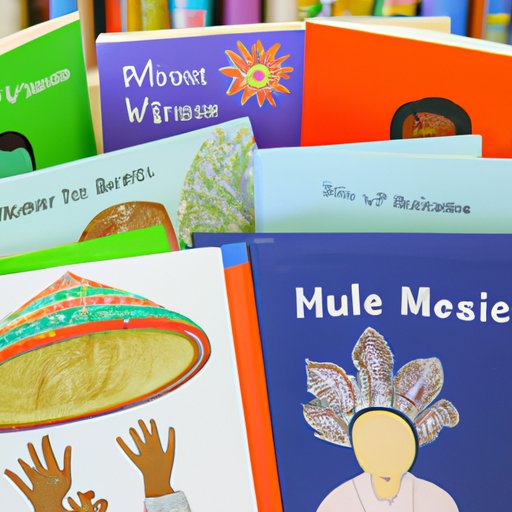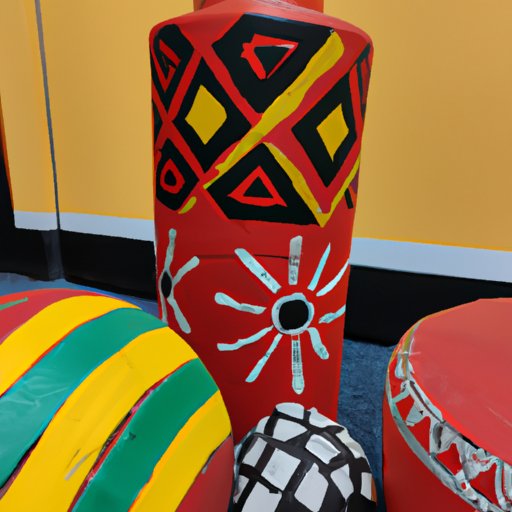Introduction
The concept of culture in the classroom is a widely accepted notion that has been embraced by educators across the world. In its simplest form, culture in the classroom refers to the incorporation of diverse cultural values, beliefs, and practices into the educational environment. This includes introducing students to cultural concepts such as language, customs, art, music, literature, and history. By doing so, teachers can create a more inclusive, meaningful learning experience for their students and prepare them to thrive in an increasingly globalized world.
Incorporating culture in the classroom is essential for providing students with an understanding of the diverse perspectives of their peers and for helping them develop empathy and respect for those who come from different backgrounds and experiences. Additionally, it encourages students to become more engaged and thoughtful learners, as they are exposed to a variety of ideas and cultures. With this in mind, there are a number of ways that teachers can incorporate culture into their classroom and curriculum.

Incorporating Multicultural Books and Stories into the Curriculum
One way to introduce students to different cultures is through the use of multicultural books and stories. These books and stories provide students with an opportunity to explore different cultures, perspectives, and experiences. Additionally, they can be used to spark conversations about current events and issues related to diversity, equity, and inclusion.
Benefits of Multicultural Books and Stories
There are numerous benefits to incorporating multicultural books and stories into the classroom. For one, they can help students gain a better understanding of other cultures and foster greater appreciation of different backgrounds and experiences. They can also serve as a platform for discussing sensitive topics such as racism, sexism, and discrimination in a safe and respectful manner. Finally, multicultural books and stories can help students become more engaged and enthusiastic readers, as they are exposed to a variety of perspectives and stories.
Strategies for Finding and Selecting Appropriate Books and Stories
When selecting books and stories to incorporate in the classroom, it’s important to select ones that accurately represent the culture they are depicting. To do this, teachers should research books and stories that have been written by authors from the culture they are looking to represent. Additionally, teachers should look for books and stories that accurately depict the culture and avoid ones that rely on stereotypes or cliches. Lastly, teachers should consider the age and maturity level of their students when selecting books and stories.
Examples of Successful Implementation
One example of a successful implementation of multicultural books and stories in the classroom is the “Book Club” program at Eastside Elementary School. This program was created to give students the opportunity to explore different cultures and perspectives through reading. Each month, students read a book from a different culture and then discuss their thoughts and feelings with their peers. The program has been incredibly successful, with students becoming more engaged and enthusiastic readers and learning to appreciate different cultures and perspectives.
Encouraging Cross-Cultural Collaboration Projects
Another way to incorporate culture in the classroom is through encouraging cross-cultural collaboration projects. These projects allow students to work together to explore and understand different cultures and perspectives. Additionally, they can help foster a sense of respect and appreciation for differences among classmates.
Benefits of Cross-Cultural Collaboration Projects
Cross-cultural collaboration projects provide numerous benefits for students. For one, they can help students gain a better understanding and appreciation for different cultures. Additionally, they can help students develop communication and collaboration skills, as they work together to complete the project. Finally, these projects can help foster a sense of community and connection among students, as they work together to explore and understand different cultures.
Strategies for Creating Successful Projects
When creating a cross-cultural collaboration project, it’s important to ensure that it is both culturally sensitive and educationally appropriate. To do this, teachers should research cultures and perspectives that they plan to include in the project. Additionally, teachers should provide clear guidelines and expectations for the project and ensure that all students feel comfortable participating. Lastly, teachers should provide adequate resources and support to help students complete the project.
Examples of Successful Implementation
An example of a successful implementation of a cross-cultural collaboration project is the “Global Citizens” project at Southside Middle School. This project asked students to work together to research and create presentations about different cultures around the world. Students were able to learn about different cultures, explore different perspectives, and collaborate with their peers. The project was incredibly successful and resulted in increased understanding and appreciation for different cultures among the students.

Utilizing Cultural Symbols in Classroom Decorations
Incorporating cultural symbols into classroom decorations is another way to incorporate culture in the classroom. These symbols can help create a welcoming, inclusive environment for students of all backgrounds and provide students with a visual representation of different cultures. Additionally, they can provide teachers with an opportunity to discuss different cultural symbols and their meanings.
Benefits of Cultural Symbols in the Classroom
Utilizing cultural symbols in the classroom offers numerous benefits for students. For one, they can help create a welcoming, inclusive environment for all students. Additionally, they can help foster a greater appreciation and understanding of different cultures, as students are exposed to visual representations of different cultures. Finally, they can help spark conversations and discussions about different cultures and their symbolism.
Strategies for Finding and Selecting Appropriate Symbols
When selecting cultural symbols for classroom decorations, it’s important to ensure that they accurately represent the culture they are depicting. To do this, teachers should research symbols from different cultures and select ones that are culturally appropriate and respectful. Additionally, teachers should consider the age and maturity level of their students when selecting symbols.
Examples of Successful Implementation
One example of a successful implementation of cultural symbols in the classroom is the “World Wall” at Westside High School. This wall features symbols from different cultures around the world, including flags, images, and words. The wall has been incredibly successful, providing students with a visual representation of different cultures and sparking conversations about different cultures among the students.
Inviting Guest Speakers from Different Cultures
Another way to incorporate culture in the classroom is by inviting guest speakers from different cultures. These speakers can provide students with an opportunity to hear from individuals from different backgrounds and perspectives and gain a better understanding of their cultures. Additionally, they can provide students with insight into different career paths and experiences.
Benefits of Guest Speakers
Inviting guest speakers from different cultures provides numerous benefits for students. For one, they can help students gain a better understanding and appreciation for different cultures. Additionally, they can provide students with insight into different career paths and experiences. Finally, they can help foster a sense of respect and appreciation for diversity among students.
Strategies for Finding and Inviting Suitable Speakers
When selecting guest speakers, it’s important to ensure that they are knowledgeable and experienced in their field. To do this, teachers should research potential speakers and select ones that have expertise in the topics they plan to cover. Additionally, teachers should consider the age and maturity level of their students when selecting speakers.
Examples of Successful Implementation
An example of a successful implementation of guest speakers from different cultures is the “Global Voices” program at Northside High School. This program invited speakers from different countries to share their experiences and perspectives with students. The program was incredibly successful, with students gaining a better understanding and appreciation for different cultures and perspectives.

Celebrating Cultural Holidays and Events
Finally, celebrating cultural holidays and events is another way to incorporate culture in the classroom. These celebrations provide students with an opportunity to learn about different cultures and their traditions, as well as an opportunity to celebrate and appreciate diversity.
Benefits of Celebrating Cultural Holidays
Celebrating cultural holidays and events provides numerous benefits for students. For one, they can help students gain a better understanding and appreciation for different cultures. Additionally, they can help foster a sense of unity and connection among students, as they celebrate and appreciate their differences. Finally, they can provide students with an opportunity to learn about different cultures and their traditions.
Strategies for Finding and Selecting Appropriate Holidays and Events
When selecting holidays and events to celebrate in the classroom, it’s important to ensure that they are culturally appropriate and respectful. To do this, teachers should research holidays and events from different cultures and select ones that are suitable for their students. Additionally, teachers should consider the age and maturity level of their students when selecting holidays and events.
Examples of Successful Implementation
An example of a successful implementation of celebrating cultural holidays and events is the “International Festivals” program at Central Elementary School. This program invited families from different cultures to share their traditions and celebrate their holidays with the students. The program was incredibly successful, with students gaining a better understanding and appreciation of different cultures and their traditions.
Conclusion
In conclusion, incorporating culture in the classroom is essential for providing students with an understanding of the diverse perspectives of their peers and for helping them develop empathy and respect for those who come from different backgrounds and experiences. There are a number of ways that teachers can incorporate culture into their classroom and curriculum, including incorporating multicultural books and stories into the curriculum, encouraging cross-cultural collaboration projects, utilizing cultural symbols in classroom decorations, inviting guest speakers from different cultures, and celebrating cultural holidays and events. By doing so, teachers can create a more inclusive, meaningful learning experience for their students and prepare them to thrive in an increasingly globalized world.
(Note: Is this article not meeting your expectations? Do you have knowledge or insights to share? Unlock new opportunities and expand your reach by joining our authors team. Click Registration to join us and share your expertise with our readers.)
